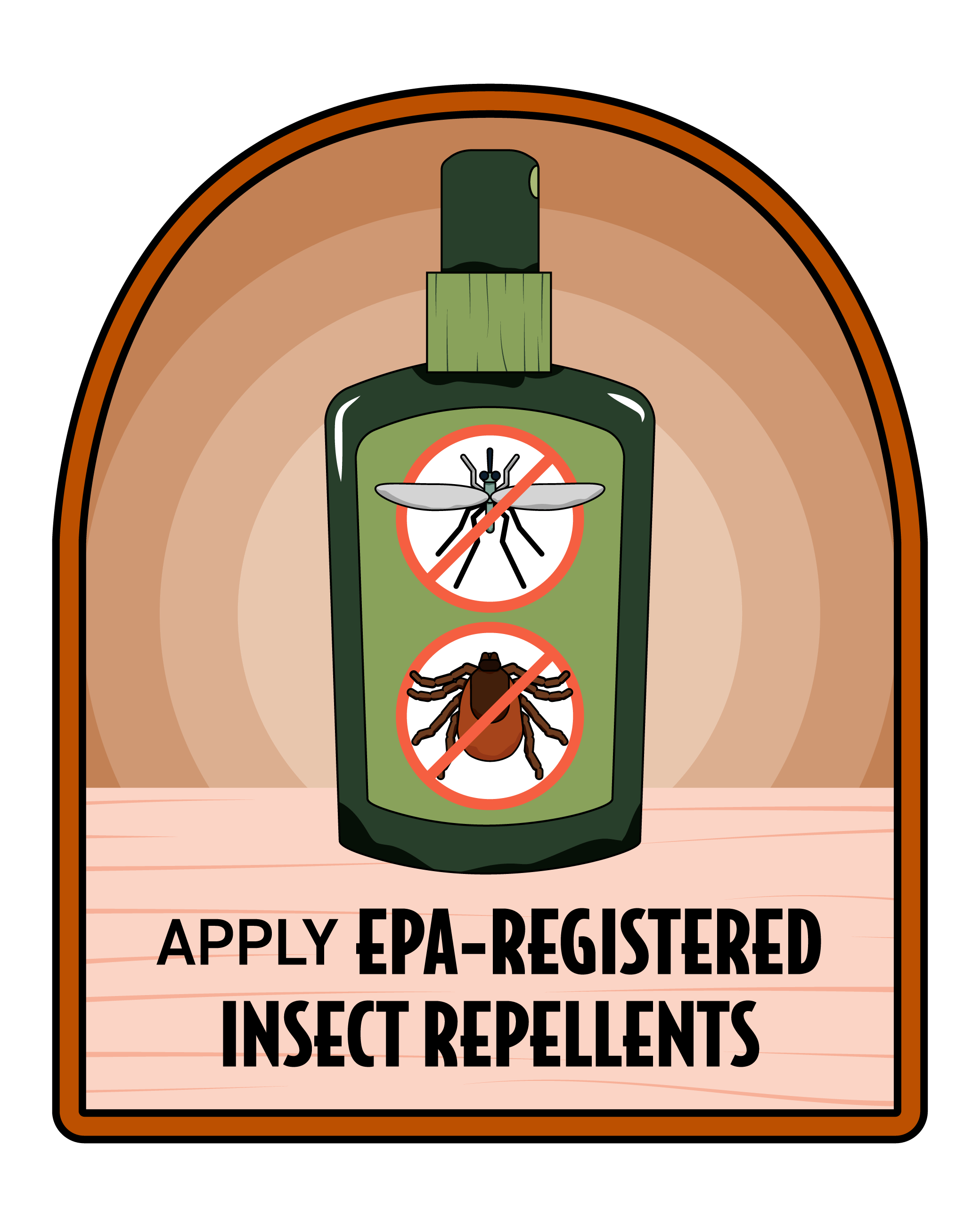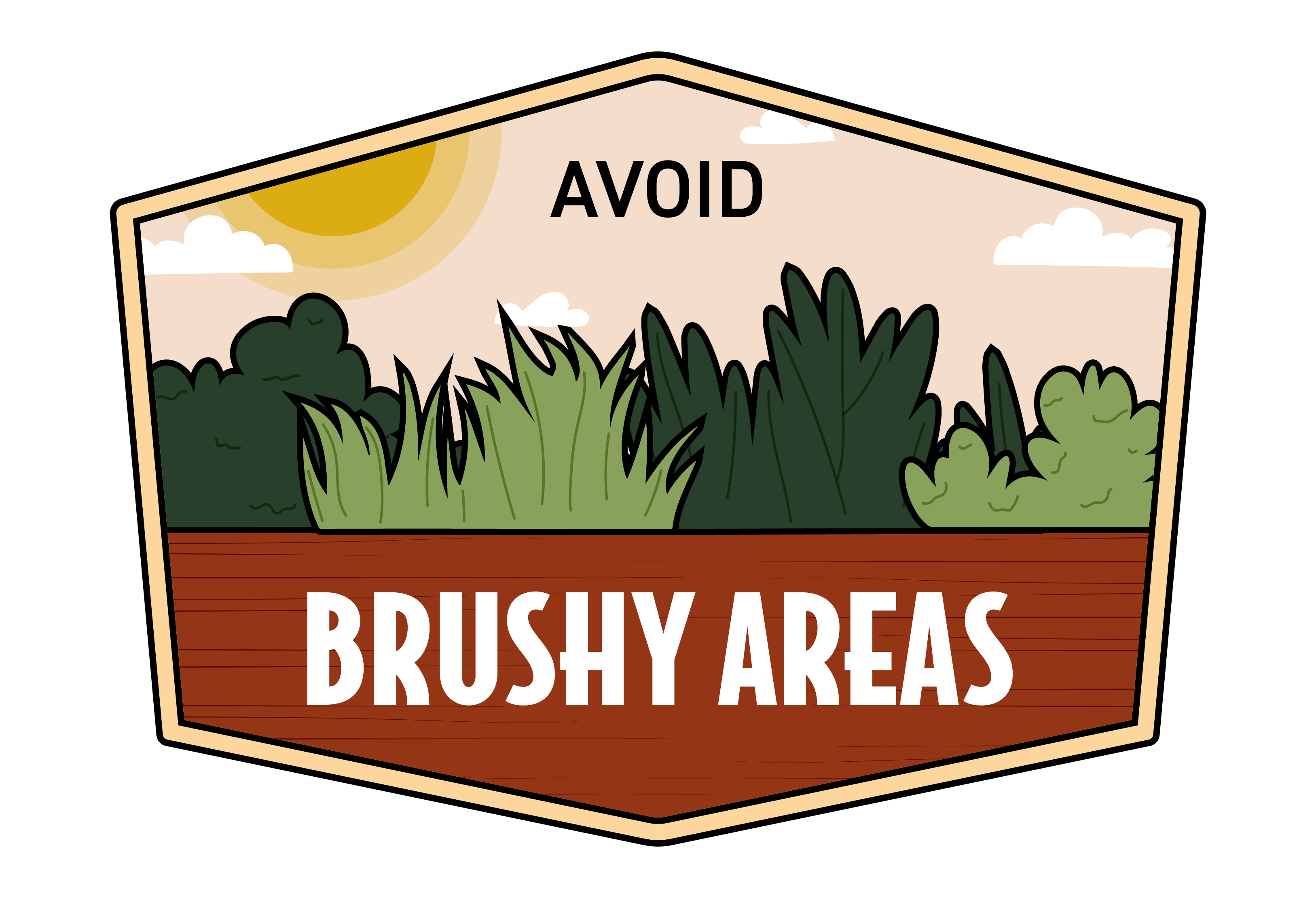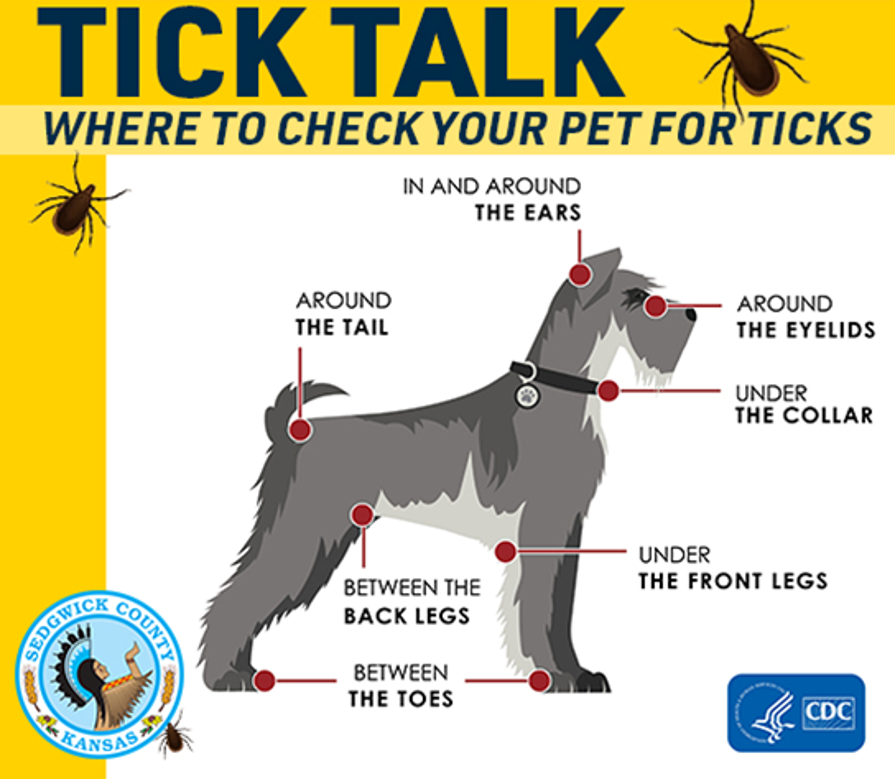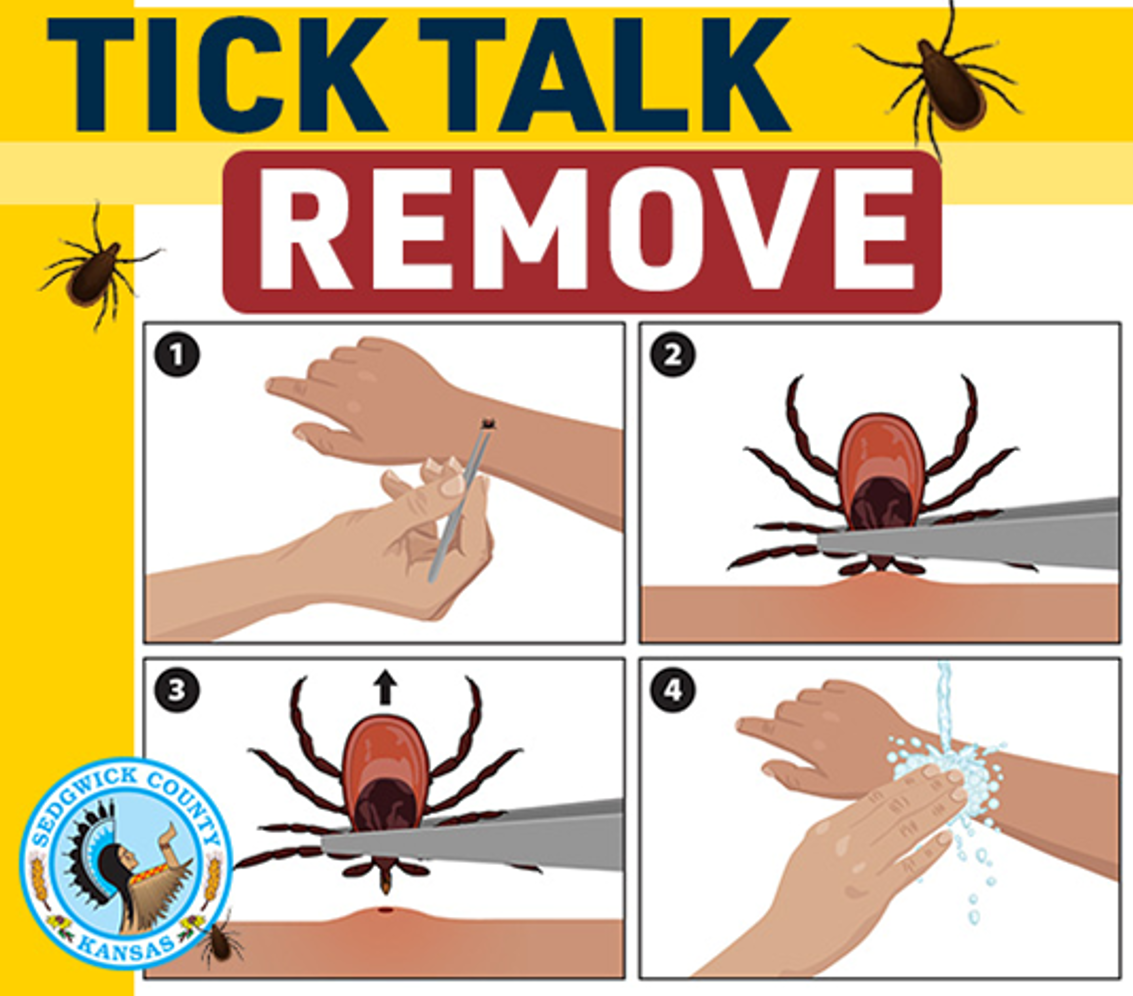Ticks
Tick season is during the spring, summer, and fall!
(April-September)
| QUICK LINKS | Tickborne Diseases | Tick Bite Bot | Resources | Protect | Check | Remove | Watch |
The best way to prevent tickborne diseases in people and animals is to use appropriate measures to
prevent ticks from ever attaching or feeding.
Staying out of areas where ticks live is one of the best ways to avoid tickborne diseases.
| Anaplasmosis* (KDHE) |
| Ehrlichiosis* (KDHE) | CDC* |
| Lyme Disease |
|
Rocky Mountain Spotted Fever* (KDHE) |
| Tularemia |
Handouts
- Kansas Tick Guide (K-State)
Other Links
Click on the image below to use the Environmental Protection Agency's (EPA) Insect Repellent Search Tool* to find the repellent that is right for you.

TICK TALK
Be Tick Smart & Prevent Disease!
Use EPA-approved insect repellents on skin.
- Use repellent that contains 20 percent or more DEET, on exposed skin for protection that lasts several hours.
- Parents should apply the product to their children, avoiding hands, eyes, and mouth.
- Follow label directions. Do not over-apply.
Tuck pant legs into socks and wear light-colored protective clothing, which should help make ticks
more visible.
Avoid wooded and brushy areas with high grass and leaf litter. Walk in the center of trails.
- Ticks live in grassy, brushy, or wooded areas, or even on animals. Spending time outside walking your dog, camping, gardening, or hunting could bring you in close contact with ticks. Many people get ticks in their own yard or neighborhood.

Consider using products that contain permethrin on clothing. Treat clothing and gear, such as boots, pants, socks and tents.
Protect your pet!
Keep your pets on a flea and tick preventative recommended by your veterinarian.
- Talk to your veterinarian about the best options for protecting your pet from ticks that carry disease.
- Never use products containing DEET or citronella on pets as they can be toxic.
- Products should only be given according to the label, and dog products should never be used on cats. (Always use products specifically designed for your pet.)
- You have to treat every pet in the household to prevent or control infestations
Check for ticks every day!
- Check your clothing and gear for ticks.
- Check your body for ticks, including:
- In and around the hair
- In and around the ears
- Under the arms
- Inside belly button
- Around the waist
- Between the legs
- Back of the knees
- Take a shower after coming in from outside. (According to the CDC, showering after coming indoors reduces your risk of Lyme disease.)

- In and around the ears
- Around the eyelids
- Around the tail
- Between the back legs
- Under the front legs
- Between the toes

Ticks can transmit diseases when attached in less than 24 hours, so the faster you remove them, the less likely you are to get a tick-borne disease.
If you find a tick attached to your skin, remove the tick as soon as possible. Do not wait to go to a healthcare provider to remove the tick. Delaying tick removal to get help from a healthcare provider could increase your risk of getting a disease spread through tick bites, known as tickborne diseases.
- Grasp the tick as close to the skin's surface as possible using clean fine-tipped tweezers. If fine-tipped tweezers are not available, use regular tweezers or your fingers to grasp the tick. Grasp the tick close to the skin's surface to avoid squeezing the tick's body.
- Pull tick away from the skin with steady, even pressure. Don't twist or jerk the tick. This can cause the tick mouthparts to break off and remain in the skin. If this happens, your body will naturally push the mouthparts out over time as your skin heals. You can also remove the mouthparts with tweezers. If you cannot remove the mouthparts easily with tweezers, leave them alone.
- Dispose of the live tick by taking one of these steps: place it in a sealed container; wrap it tightly in tape; flush it down the toilet; or put it in alcohol. Do not crush the tick with your fingers. (After removing the tick, thoroughly clean the bite area and your hands with soap and water, rubbing alcohol, or hand sanitizer.)

* External Link
Some materials reproduced and/or adapted from the cdc.gov/ticks.

